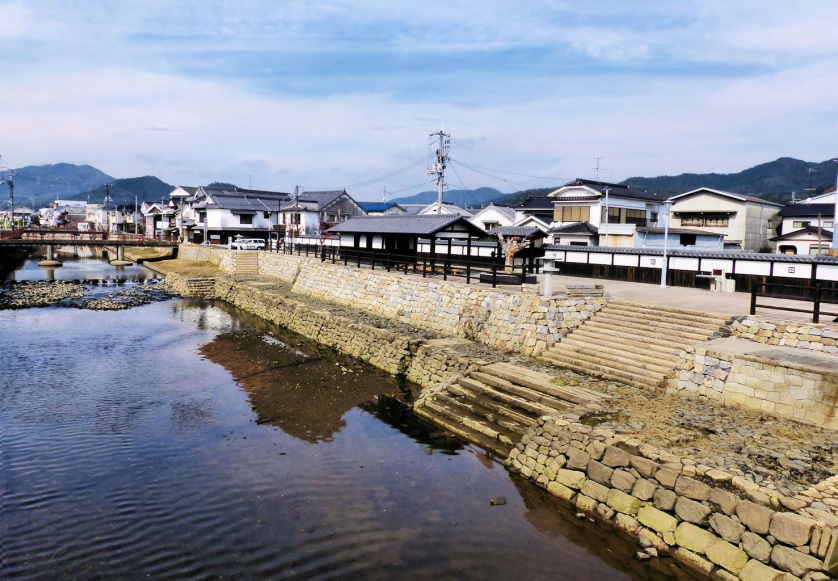I woke regularly during the night, as one does when sleeping out, but no rain came, so as the first hint of light in the sky made its appearance I packed up and headed off in the dark. The road was a narrow, windy, mountain road downhill until the river valley that would lead to Tokuji. While colored leaves may be the most obvious marker of autumn, morning mist filling the valleys is another and at sunrise I saw the mist burn off to reveal a sky bereft of rain clouds.
Tokuji was big enough to have a convenience store so I was able to take a break and have some hot, fresh coffee. From Tokuji I followed the Saba River south for a while. The mountains were dappled with a wide range of colors. I actually prefer that to the artificially planted maple.
At a large shrine, a branch of Izumo Taisha, there was mostly evergreen, but one huge, sacred Cedar was framed by a splash of bright yellow. I left the river here as it flowed south to Hofu and the sea, and I headed west, once again a long climb uphill. I now had to pay for the long downhill section I had enjoyed this morning.
As I got close to the highest point, the stream I had been following became smaller and there was a line of maples along the road. Down below I could hear a waterfall and there was a path down to it but I was bushed from walking uphill for an hour or so and didn't fancy the clamber back up to the road. My route now ran alongside the expressway and the mountainsides were covered with more of the natural autumn colors.
The road once again began to descend on the long way down to Niho where I found a supermarket next door to a Road Station holding a small festival. One more uphill slope, much shorter than I had feared and I descended into Miyano at the northern edge of Yamaguchi City. The heavy rain predicted had made no appearance.

































